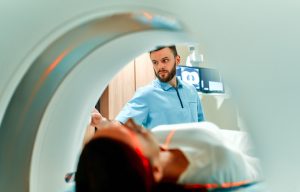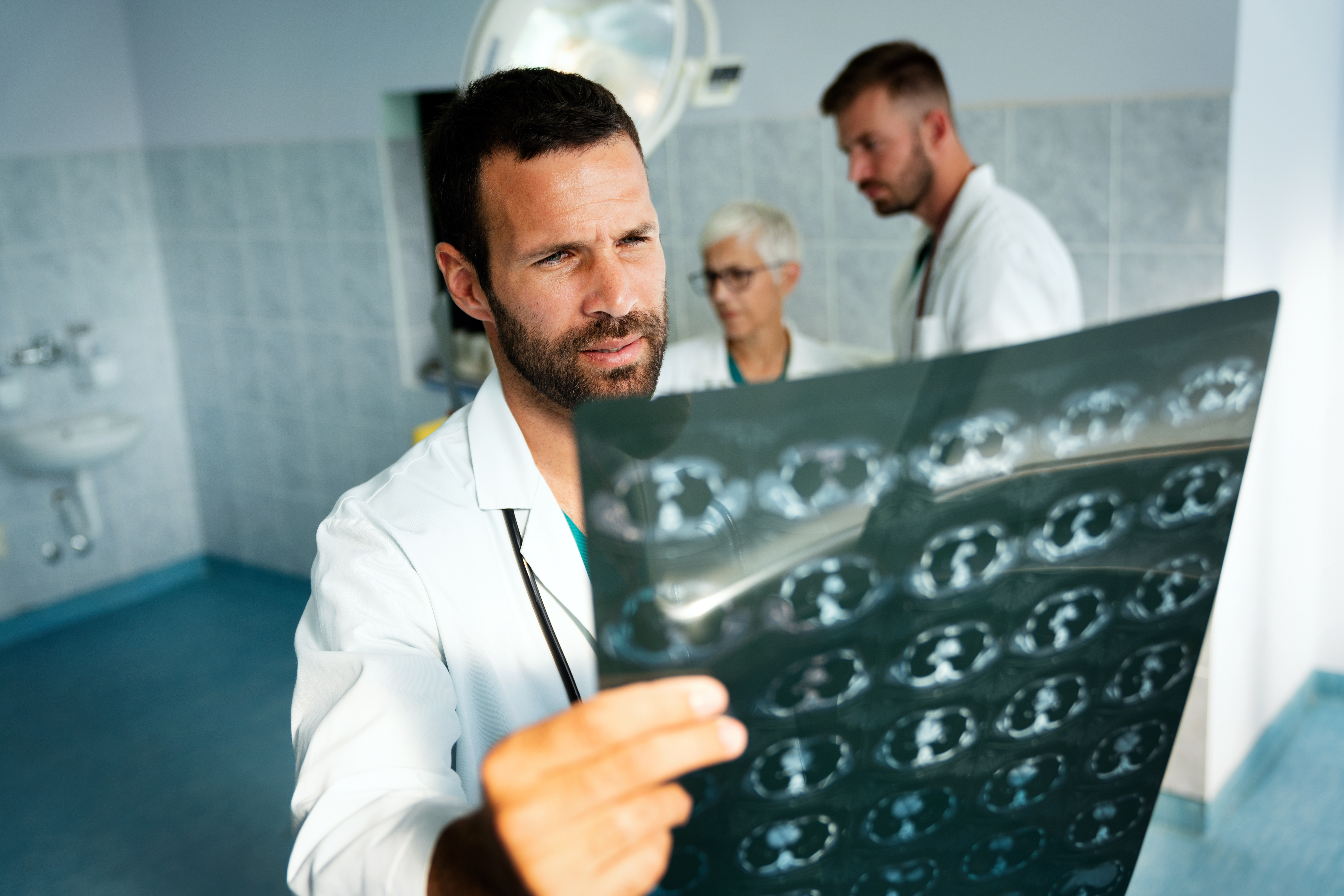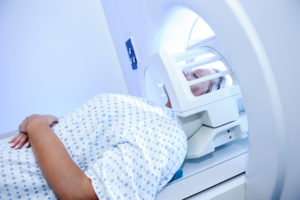Electromiografía
En BEST, entendemos que la debilidad muscular y los trastornos nerviosos pueden ser debilitantes y confusos, por lo que es fundamental comenzar el proceso de pruebas y atención.
¿Qué es una electromiografía?
La actividad eléctrica captada por los electrodos se muestra luego en un osciloscopio (un monitor que muestra la actividad eléctrica en forma de ondas). Se utiliza un amplificador de audio para que se pueda escuchar la actividad. La EMG mide la actividad eléctrica muscular durante el reposo, la contracción leve y la contracción enérgica.
El tejido muscular normalmente no produce señales eléctricas durante el reposo. Cuando se inserta un electrodo, se puede ver un breve período de actividad en el osciloscopio, pero después de eso, no debería haber ninguna señal.
Que esperar
Durante la EMG, un neurólogo evaluará si existe alguna actividad eléctrica espontánea mientras el músculo está en reposo, así como el grado de actividad cuando los músculos están ligeramente contraídos. Se le darán instrucciones al paciente sobre cómo descansar y contraer el músculo en los momentos adecuados. Dependiendo de los músculos que se examinen, el neurólogo puede pedirle que cambie de posición durante el examen. Si tiene alguna pregunta o inquietud sobre el procedimiento, no dude en comentarla con su neurólogo.
Tras la EMG, el neurólogo interpretará los resultados y elaborará un informe. Se programará una cita de seguimiento con su médico para analizar los resultados.
Electromiografía en el MEJOR
Si le recomiendan una prueba de diagnóstico por electromiografía para comprobar la respuesta de la estimulación nerviosa de los músculos, BEST puede ayudarle. Si necesita atención adicional para los sistemas de neuropatía o tratamiento nervioso, BEST ofrece una variedad de servicios realizados por nuestros cirujanos certificados. Nuestros procedimientos mínimamente invasivos generalmente emplean una incisión de menos de una pulgada. Esto permite una recuperación más rápida, elimina la necesidad de pasar la noche en el hospital y reduce los riesgos y complicaciones generales.
Para obtener más información sobre lo que BEST tiene para ofrecer, ¡no dude en contactarnos hoy!
Procedimiento Médicos
Artículos relacionados
Somos EL MEJOR Sistema de Salud
BEST Health System: el moderno centro ambulatorio que ofrece atención quirúrgica avanzada BEST Health System es un moderno centro ambulatorio que ofrece atención quirúrgica avanzada para […]
Su guía completa de imágenes médicas
La importancia de las imágenes médicas con fines de diagnóstico Las imágenes médicas desempeñan un papel fundamental en la atención sanitaria moderna, ya que permiten diagnósticos precisos y eficientes que tienen la […]
De rayos X a resonancias magnéticas: una guía para la tecnología de imágenes
¿Qué es la tecnología de imágenes médicas? Las imágenes médicas se refieren a la tecnología sofisticada utilizada para capturar imágenes internas de las estructuras del cuerpo. Esto es increíblemente importante […]
Lo que todos deben saber sobre las pruebas de resonancia magnética
La resonancia magnética o MRI es un procedimiento no invasivo que proporciona una imagen de alta resolución del interior del cuerpo. Es similar a un […]
Todo lo que necesita saber sobre las radiografías para el dolor de espalda | MEJOR
Si ha acudido a un médico para que lo ayude con su dolor de espalda, es probable que su dolor haya progresado hasta el punto en que […]
¿Necesito una tomografía computarizada para un diagnóstico de dolor de espalda? | MEJOR
Una tomografía computarizada (TC) es una de las pruebas más utilizadas para diagnosticar el dolor de espalda y cuello. Esta prueba es indolora, no invasiva y […]
¿Necesito una resonancia magnética para un diagnóstico de dolor de espalda? | MEJOR 
La resonancia magnética, comúnmente conocida como resonancia magnética, es un tipo de exploración que se puede usar para diagnosticar el dolor de espalda. Las imágenes producidas por […]
¿Distensión muscular o lesión más grave? Cómo averiguarlo | MEJOR
Desarrollar tensión muscular es extremadamente común. De hecho, todos se encuentran con esta lesión menor en algún momento u otro de sus vidas. Ya sea que te excedas […]
Hablemos de los procedimientos de compresión con Laserdisc | MEJOR
Los procedimientos con disco láser, o descompresión con disco láser, es un término que puede abarcar múltiples procedimientos. Cualquier descompresión de disco láser utiliza asistencia láser para eliminar […]








